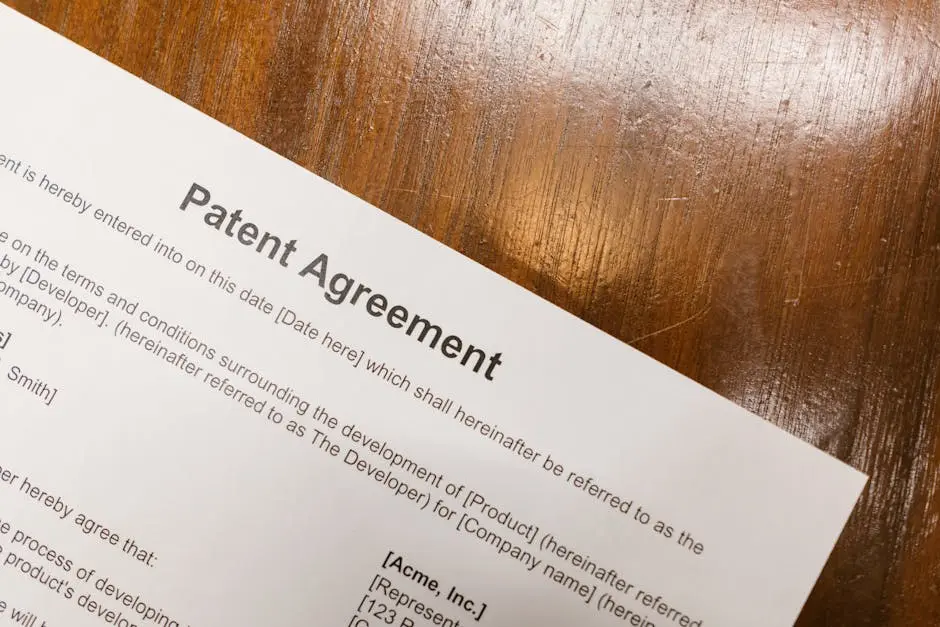Navigating the world of patent bar questions can be daunting for many candidates. Understanding the key concepts not only helps you prepare effectively but also boosts your confidence. Here’s a friendly guide to the crucial topics you need to master!
1. Understanding Intellectual Property Basics
Before diving into patent-specific concepts, it’s vital to have a solid foundation in intellectual property rights, including trademarks and copyrights. These elements form the backbone of innovation protection, and grasping their nuances sets the stage for understanding patents. For instance, you might find that the distinction between a trademark and a patent is pivotal; while a trademark protects brand identity, a patent safeguards inventions. This fundamental knowledge will not only help you in your exam but also in real-world applications.
Moreover, intellectual property law is continually evolving, influenced by advancements in technology and changing market dynamics. With that in mind, recognizing the importance of staying updated with current events and legal changes is equally essential. As you prepare for the patent bar questions, consider how these foundational concepts intertwine with more complex patent laws, creating a holistic understanding of the intellectual property landscape.
2. Types of Patents Explained
Familiarize yourself with the three main types of patents: utility, design, and plant patents, to understand their distinct characteristics and applications. Utility patents protect the functionality of inventions, ranging from machines to processes; they are often the most sought-after due to their broad coverage. On the other hand, design patents focus on the ornamental aspects of an item, which means they safeguard the unique appearance of a product rather than its utility. Did you know that a design patent might cover everything from a smartphone’s sleek look to the contour of a bottle? It’s a fascinating division!
Lastly, plant patents are a special category aimed at protecting new varieties of plants that have been asexually reproduced. This unique patent type highlights the intersection of nature and innovation, allowing inventors to capitalize on their agricultural innovations. As you review patent bar questions, understanding these distinctions will clarify the type of patent each invention needs, deepening your legal acumen in this vibrant field.
3. The Role of the USPTO
Gain insight into the United States Patent and Trademark Office (USPTO) and its function in granting patents and regulating patent law. The USPTO acts as the gatekeeper of innovation in the country, handling everything from patent applications to trademark registrations. One unique aspect of the USPTO is its dual mission: not only does it approve patents, but it also educates inventors to foster a better understanding of intellectual property rights. This dual approach helps make the patent process more transparent and accessible.
Furthermore, the USPTO offers various resources for candidates, including online tools that provide insights into patent examinations and application statuses. Understanding the operational nuances of the USPTO can be invaluable while preparing for patent bar questions, as you’ll encounter scenarios that require knowledge of this governmental body. Remember, every decision made by the USPTO impacts inventors, businesses, and the economy, making it a critical player in the realm of intellectual property.
4. Patentability Requirements
Know the key requirements for patentability: novelty, non-obviousness, and utility, which are essential to determine if an invention can be patented. Novelty refers to the uniqueness of the invention—has it been disclosed to the public before? To meet this requirement, an invention must be new and not known to others in the field. Non-obviousness is another crucial hurdle; it evaluates whether someone with average skills in the field would find the invention obvious based on prior art.
Utility, the last requirement, mandates that the invention serves a practical purpose. If an invention fails to fulfill this criterion, it won’t qualify for a patent. Together, these requirements create a robust framework ensuring that only deserving inventions receive patent protection. Familiarizing yourself with these standards not only aids you in answering patent bar questions but also equips you with the critical thinking skills necessary to analyze innovative concepts.
5. Understanding Prior Art
Learn what constitutes prior art and why it is crucial in assessing the novelty of a patent application. At its core, prior art includes any evidence that your invention isn’t new, including patents, publications, or public demonstrations. This concept underpins the entire patent system; by building on past innovations, inventors contribute to progressive development. As you ponder patent bar questions, it’s essential to discern more than just published works; the definition of prior art can extend to anything that sheds light on the invention’s uniqueness.
This notion also brings to light the importance of comprehensive research. Candidates should hone their research skills to accurately determine if a concept is indeed novel. A thorough examination of prior art can not only enhance their applications but also provide valuable insights into what is feasible in their inventive process. Therefore, as you navigate the exam, keep in mind that understanding prior art is a pathway to success, drawing a line between groundbreaking ideas and those that merely recycle existing inventions.
6. The Patent Application Process
Explore the step-by-step process of filing a patent application, including the preparation of detailed descriptions and claims. The application process may seem complex, but breaking it into manageable steps can unearth its intricacies. Initially, candidates must prepare a comprehensive written description that elucidates the invention, detailing how it works and its unique benefits. In this narrative, every element matters!
Next, crafting the claims is crucial—this is where you define the patent’s protective boundaries. Precision is key, as claims dictate the scope of protection and can make the difference between a successful application and one that gets rejected. Furthermore, various application types such as Provisional and Non-Provisional patents introduce additional considerations. Gaining familiarity with these intricacies ensures you can confidently tackle patent bar questions related to the application process, effectively navigating both theoretical and practical scenarios.
7. Examining Patent Claims
Understanding how to read and interpret patent claims is vital, as they define the scope and protection of the patent. Each claim outlines specific aspects of the invention, which means they are fundamental to patent enforcement. Candidates should practice dissecting claims, breaking them down into their essential components—each term must be understood to clarify the extent of protection granted.
Additionally, comprehending the claim hierarchy is vital, as dependent and independent claims play different roles. Independent claims outline the broadest protection, while dependent claims offer additional specifics. By mastering this structure, candidates can answer patent bar questions with authority, illustrating a profound understanding of how to assert and defend patent rights effectively.
8. The Importance of Written Description
Learn about the written description requirement, which ensures that the inventor adequately explains the invention’s details. This requirement is not just a formality; it serves to disclose the technical aspects and the inventive concept to the public. An effectively written description can differentiate a successful application from a rejected one, as it must accurately represent the invention’s full scope.
To ace patent bar questions related to this topic, candidates must practice articulating their ideas clearly and comprehensively. This ability will not only help in drafting applications but also in addressing exam scenarios where clarity and depth of understanding are tested. Remember, a well-drafted written description could be the key that unlocks the door to patent protection!
9. Figures and Drawings in Patents
Discover the significance of including figures and drawings in patent applications to clarify complex concepts. Visuals serve as powerful tools, allowing inventors to illustrate their inventions graphically, which can often communicate ideas more effectively than text alone. This visual representation plays a critical role in the patent examination process, making it easier for examiners to understand the invention’s uniqueness.
Moreover, showcasing well-crafted figures can minimize misunderstandings that sometimes arise from written descriptions. Candidates preparing for patent bar questions should master the art of drafting clear and accurate illustrations, as they will not only help secure patents but also enhance understanding among potential users and stakeholders. Investing time in developing these visuals is an investment in the clarity and success of an application.
10. Responding to Office Actions
Be prepared to respond to office actions from the USPTO, including rejections and requests for additional information. These communications can feel intimidating; however, they are part and parcel of the patent application process. Recognizing that office actions present opportunities to refine and strengthen your application is essential. Candidates need to approach these situations with a strategic mindset, understanding the examiner’s perspective.
As you study for the patent bar exam, familiarize yourself with common types of office actions and the relevant response strategies. For example, a technical rejection might require you to clarify claims or provide additional data supporting your application. The key is maintaining thorough communication with the USPTO and demonstrating an understanding of its concerns. This skill will not only help you answer exam questions effectively but also position you as a competent applicant in real-world situations.
11. Understanding Patent Term and Maintenance
Know how long a patent lasts and the importance of maintaining it through required fees and filings. Typically, utility patents have a term of 20 years from the application date, while design patents last for 15 years post-issuance. Understanding this differentiation is crucial as it impacts both the strategy and the revenue potential associated with an invention. However, what many don’t realize is that the patent’s protection isn’t guaranteed for the entire term; it requires diligent maintenance.
Failure to pay maintenance fees can lead to patent expiration, leaving the invention vulnerable to infringement. Candidates should memorize critical filing dates and fee schedules to ensure they don’t miss any important deadlines. By grasping these aspects, you’ll be well-equipped to tackle patent bar questions, illustrating thorough legal knowledge that will serve you and your clients in the future.
12. Common Patent Law Terms
Familiarize yourself with essential patent law terminology, which will help you navigate exam questions and discussions. Mastering terms such as ‘prior art,’ ‘claims,’ and ‘infringement’ not only augments your vocabulary but also fortifies your understanding of the subject. Having a well-rounded grasp of these concepts allows you to approach questions with confidence, providing you a significant edge on exam day.
It’s beneficial to create flashcards or summary notes for these key terms, as repetition enhances retention. Additionally, exploring how these terms apply in practical scenarios can solidify your understanding. Candidates who succeed in the patent bar exam often find that their fluency in patent terminology plays a crucial role in their ability to comprehend and analyze questions effectively.
13. International Patent Protection
Explore how patent laws differ internationally and the systems in place for securing worldwide patent protection. Understanding international treaties and agreements, such as the Patent Cooperation Treaty (PCT) and the Paris Convention, is essential for anyone aspiring to navigate global markets. With businesses increasingly operating on an international scale, knowledge of these frameworks positions you as a competitive candidate in the patent bar exam.
International patent protection transcends borders, but it demands meticulous planning and strategy from inventors. Candidates should appreciate that obtaining a patent in one country does not automatically grant rights in another; therefore, a clear understanding of territoriality is crucial. As you prepare for your exam, consider how these international distinctions might appear in practice questions, and how they influence global innovation.
14. Study Resources for Success
Utilize various study resources, including online courses, textbooks, and practice exams to reinforce your understanding and prepare thoroughly. Engaging with different mediums helps cater to diverse learning styles, ensuring that you not only read about concepts but also apply them in practice. A blend of theoretical knowledge and practical application is the key to solid comprehension.
Additionally, joining study groups can be incredibly beneficial. Collaborating with peers allows for diverse perspectives and enhances the learning process, turning challenging concepts into manageable discussions. By utilizing these study materials—and staying consistent—candidates can significantly boost their confidence and performance when faced with patent bar questions.
15. Tips for Effective Exam Strategies
Practice effective exam strategies, including time management and question analysis, to enhance your performance on the test day. Time management is a crucial skill that directly impacts your ability to complete the exam within the allotted period. Candidates should practice pacing themselves through sample questions, ensuring they feel comfortable with their timing by exam day.
Furthermore, analyzing questions critically is equally important. Pay close attention to keywords, which can often indicate what the question is truly asking—being meticulous here can save you valuable time and effort. Preparing for the patent bar exam is not just about knowledge; it’s also about strategy. With diligent practice and attention to detail, you will undoubtedly navigate the exam with poise and assurance.







